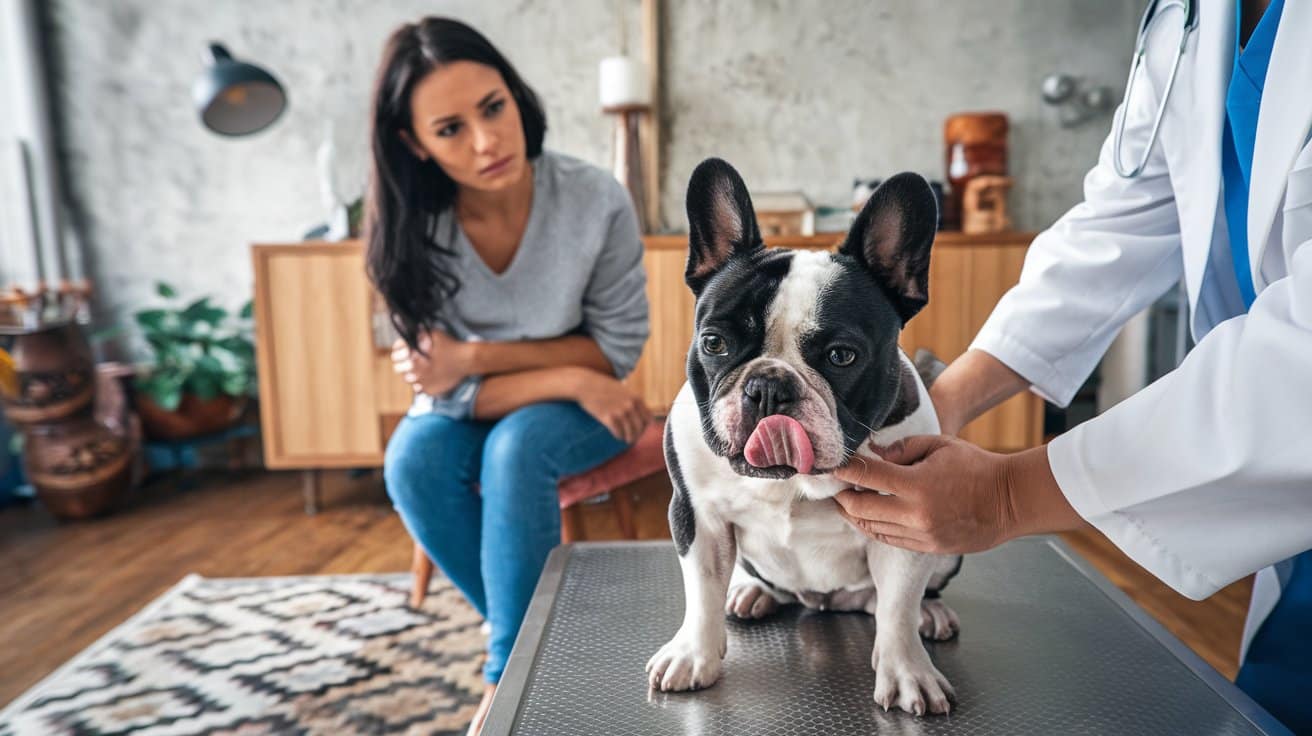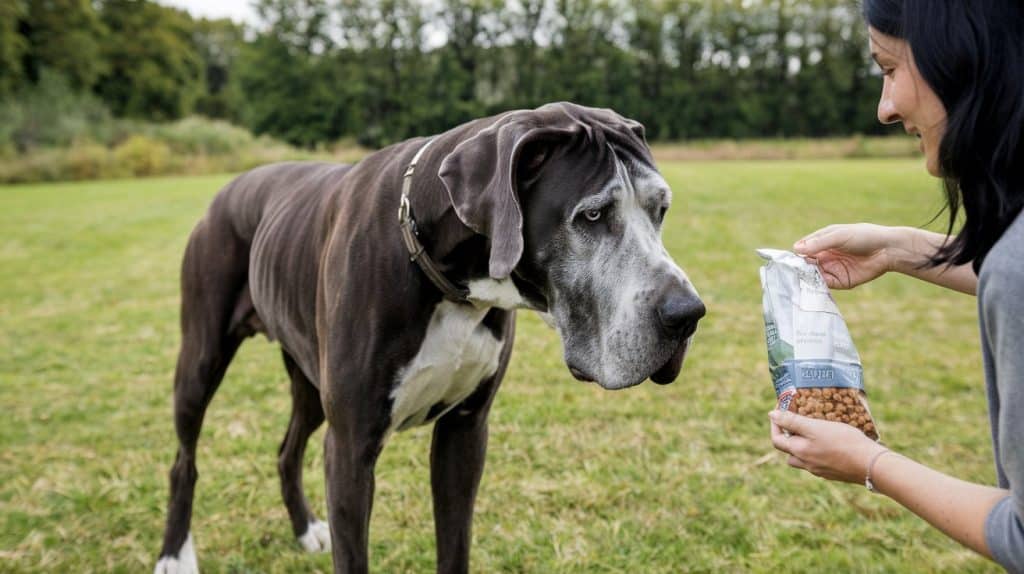Great Dog Food for Chicken-Sensitive Pets
I've seen it time and time again – dogs who are constantly scratching or experiencing tummy troubles after meals. It's heartbreaking to watch your furry friend suffer, but the good news is that it might be as simple as switching to a chicken-free dog food.
As someone who's passionate about helping pets live their best lives, I want to share with you what I've learned about finding great dog food for chicken-sensitive pets. It's not just about avoiding chicken; it's about finding a food that truly nourishes your dog's body and soul.
If you're like me, your furry friend is more than just a pet – they're part of the family. And when it comes to feeding them, you want to make sure you're giving them the best possible food for their needs.
Check out our recommended options here….
But what if your dog has a sensitivity to chicken? It's more common than you think, and it can be tricky to find a food that meets their nutritional needs without triggering any adverse reactions. That's why I'm excited to share with you some great options for dog food that are perfect for chicken-sensitive pets.

As a responsible dog owner, it's natural to worry about what you're putting in your pet's bowl. After all, their health and wellbeing are in your hands. But with so many different types of dog food out there, it can be overwhelming to know where to start.
That's where this post comes in – we'll take a closer look at some fantastic alternatives to traditional chicken-based dog foods and explore what makes them so great for pets with sensitivities.
So, if you're on the hunt for a new food that will keep your furry friend happy and healthy, keep reading! We've got the inside scoop on the best dog food for chicken-sensitive pets.
Key Takeaways:
- Novel Proteins Matter: Great dog food for chicken-sensitive pets should feature alternative proteins like lamb, fish, duck, or venison to minimize the risk of an allergic response.
- Read Labels Carefully: Always check ingredient lists for hidden sources of chicken and opt for limited ingredient recipes to make it easier to identify potential allergens.
- Gradual Transition is Key: When switching to a new food, do it gradually to avoid upsetting your dog's stomach, and monitor their response closely for any signs of discomfort or allergic reactions.
A food allergy is one of the most common allergies or hypersensitivities known to affect dogs. In a pet with an allergy, the immune system overreacts and produces antibodies to substances that it would normally tolerate. In an allergic reaction to a food, antibodies are produced against some part of the food, usually a protein or complex carbohydrate. Since antibody production is required for an allergy to develop, food allergies usually manifest after prolonged exposure to one brand, type, or form of food.
Recognizing Chicken Sensitivity in Dogs
Before we look into the world of great dog food for chicken-sensitive pets, it's necessary to understand the signs and symptoms of chicken sensitivity in dogs. If your furry friend is constantly scratching, experiencing tummy troubles, or showing signs of discomfort after meals, it may be time to consider a chicken allergy or sensitivity.
Common Symptoms
Dogs with chicken sensitivity often exhibit symptoms like itchy skin, excessive scratching, diarrhea, and vomiting. These symptoms can significantly impact your dog's quality of life, causing them stress and discomfort. [It's crucial to identify these symptoms early on to provide your dog with the necessary relief.]
Causes and Triggers
Common genetic predispositions, environmental factors, and even food processing methods can contribute to chicken sensitivity in dogs. [Understanding the underlying causes is key to finding the right solution for your pet.]
For instance, some dogs may develop allergies or intolerances to chicken proteins, leading to adverse reactions. This can occur due to overexposure to chicken-based ingredients in their diet or even through environmental exposure.
By recognizing these potential triggers, you can take the first step towards providing your dog with a more comfortable and healthy life. [By doing so, you'll be able to make informed decisions about their diet and care.]

Characteristics of Great Dog Food for Chicken-Sensitive Pets
Some dog food brands stand out from the rest when it comes to catering to chicken-sensitive pets. These exceptional formulas share certain characteristics that make them ideal for dogs with sensitivities.
Novel Proteins and Limited Ingredient Recipes
A vital feature of great dog food for chicken-sensitive pets is the use of novel proteins like lamb, fish, duck, or venison. These alternative protein sources are less likely to trigger an allergic response in dogs. [It's vital to choose a protein source that your dog hasn't been exposed to before to minimize the risk of an allergic reaction.]
Added Prebiotics and Probiotics for Digestive Health
The presence of added prebiotics and probiotics is another crucial characteristic of great dog food for chicken-sensitive pets. [Including these beneficial microorganisms can help restore the balance of gut bacteria, reducing the risk of digestive issues.]
But what exactly do prebiotics and probiotics do? They work together to create a healthy gut environment, where beneficial bacteria thrive. This, in turn, supports your dog's overall digestive health, reducing the likelihood of tummy troubles and other issues associated with sensitivities.
Choosing the Right Food for Your Pet
To find the perfect dog food for your chicken-sensitive pet, it's imperative to take a thoughtful and deliberate approach. You want to ensure that the food you choose is not only delicious but also safe and healthy for your furry friend.
Reading Ingredient Lists Carefully
Carefully scanning ingredient lists is vital when selecting a new dog food. Look for any hidden sources of chicken, such as chicken fat, chicken broth, or chicken meal, which can trigger allergic reactions. [Be sure to check the ingredient list thoroughly to avoid any accidental exposure to chicken.]
Consulting Your Veterinarian for Personalized Recommendations
Before making any significant changes to your dog's diet, it's a good idea to consult with your veterinarian. They can provide personalized recommendations based on your dog's specific needs, allergies, and health conditions. [Don't hesitate to ask for their expert opinion to ensure you're making the best decision for your pet.]
Transitioning to a New Food
Keep in mind that switching to a new dog food can be a big change for your pet's digestive system. To ensure a smooth transition, it's necessary to introduce the new food gradually.
Gradual Introduction to Avoid Upsetting the Stomach
Above all, it's crucial to mix the new food with their current diet in small increments, increasing the proportion of new food over time. [This will help prevent stomach upset and allow your dog's digestive system to adjust.] Start by replacing 25% of their current food with the new food, then gradually increase the amount over 7-10 days.

Monitoring Your Dog's Response to the New Food
Gradually introducing the new food is only half the battle; it's equally important to monitor your dog's response to the new food. [Pay close attention to any signs of discomfort, such as vomiting, diarrhea, or excessive scratching.] Keep an eye on their stool quality, energy levels, and overall behavior, as these can indicate how well they're tolerating the new food.
Even if your dog seems to be doing well, it's still necessary to continue monitoring their response over the first few weeks. If you notice any adverse reactions, consult with your veterinarian for guidance on adjusting the transition process or exploring alternative food options.
[Do not forget, every dog is different, and what works for one may not work for another.] By being vigilant and responsive to your dog's needs, you can ensure a successful transition to a new food that meets their unique requirements.
Managing Your Dog's Health and Well-being
All it takes is a little attention and care to ensure your furry friend leads a happy and healthy life, free from discomfort and allergic reactions.
Identifying Signs of Discomfort or Allergic Reactions
Healthy habits start with awareness – being able to recognize the telltale signs of discomfort or allergic reactions in your dog, such as excessive scratching, diarrhea, or vomiting, can make all the difference in providing them with the care they need.
Prioritizing Your Dog's Well-being for a Healthy Life
Prioritizing your dog's well-being is key to a healthy life, and it starts with making informed decisions about their diet [choosing the right food can be a game-changer for your dog's health]. By doing so, you're giving them the best chance to thrive and live a life free from discomfort and allergic reactions.
Allergic reactions can be stressful and uncomfortable for your dog, but with the right approach, you can help alleviate their symptoms and improve their overall well-being. By being proactive and taking the necessary steps to manage their health, you're showing your dog that you care about their happiness and comfort [making this decision can be a turning point in your dog's life].
Overcoming Common Challenges
After switching to a chicken-free diet, you may encounter some hurdles along the way. Don't worry, it's normal! With patience and persistence, you can overcome these challenges and find the perfect food for your furry friend.
Dealing with Severe Allergies or Health Concerns
Any dog with severe allergies or health concerns requires extra attention and care. It's crucial to work closely with your veterinarian to identify the best course of action and find a food that meets their specific needs.
Addressing Skin Problems and Digestive Distress
Above all, it's crucial to address skin problems and digestive distress promptly. These issues can significantly impact your dog's quality of life, causing them discomfort and stress.
Problems like itching, scratching, and digestive issues can be frustrating, but they're not impossible to solve. By introducing a novel protein source, adding prebiotics and probiotics, and monitoring your dog's response, you can help alleviate these symptoms and find relief for your furry friend.
Summary….
Hence, finding the perfect great dog food for chicken-sensitive pets can be a game-changer for your furry friend's overall health and happiness. By opting for novel protein sources, limited ingredient recipes, and added digestive support, you can help alleviate those pesky skin and tummy issues. With patience, love, and the right food, you can give your chicken-sensitive companion the comfort and quality of life they deserve.
People also ask….
Q: What are the common signs of chicken sensitivity in dogs?
A: If your furry friend is constantly scratching, experiencing tummy troubles, or showing signs of skin problems and digestive distress after meals, it could be a sign of chicken sensitivity. Keep an eye out for symptoms like itchy skin, excessive scratching, diarrhea, and vomiting, as these can significantly impact your dog's quality of life.
Q: How do I choose the best dog food for my chicken-sensitive pet?
A: When selecting a great dog food for your chicken-sensitive pet, make sure it's completely free of chicken and any chicken by-products. Opt for novel proteins like lamb, fish, duck, or venison, which are less likely to trigger an allergic response. A limited ingredient recipe can also be beneficial and look for added prebiotics and probiotics to support digestive health. Always read ingredient lists carefully and consult your veterinarian if needed.
Q: What's the best way to transition my dog to a new food, especially if they have severe allergies or sensitivities?
A: When changing to a new food in your dog's diet, do it slowly to avoid upsetting their stomach. Mix the new food with their current food in small increments over a period of time, allowing their digestive system to adjust. Keep a close eye on your dog's response to the new food, watching for any signs of discomfort or allergic reactions. If you're unsure or if your dog has severe allergies, consult your veterinarian for personalized guidance.




